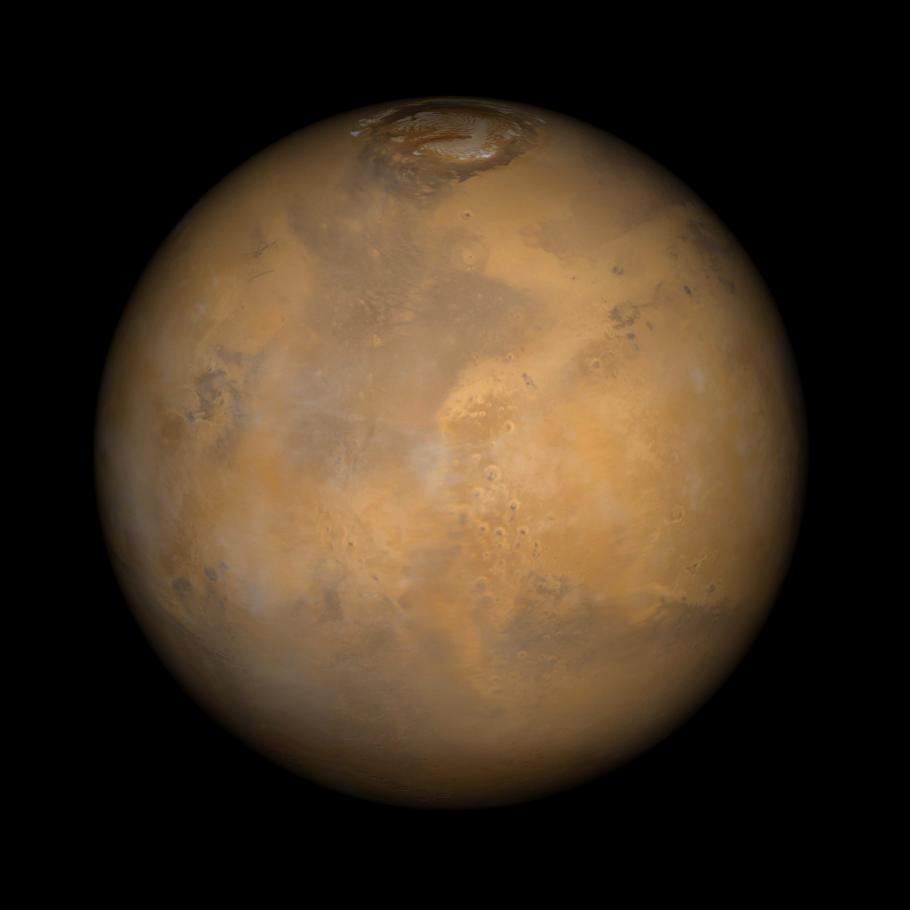
Who knew getting to Mars could be so easy? After millennia of gazing wonderingly at the Red Planet and more than half a century of firing robot spacecraft its way, the U.S. has at last figured out a way to get astronauts onto the Martian surface: make it a rule.
That was the talking point out of Washington on March 21, when, in a flashy photo op, President Donald Trump signed Senate Bill 442, an act that includes a $19.5 billion outlay for NASA for 2017 and a firm plan for a crewed Mars landing in 2033. “The President signed into law a one-year spending plan for NASA that, for the first time, explicitly requires the space agency to send humans to Mars,” read the press release promptly issued by the office of Sen. Bill Nelson (D, Fla.), a co-sponsor, with Sen. Ted Cruz (R, Tex), of the bill.
The media echoed that exciting news. “Congress just passed a bill that tells NASA to send humans to Mars by 2033,” wrote Business Insider. “US Government to NASA: Get Humans to Mars by 2033,” announced Techspot. Even RT, the Russian government’s international news outlet, was wowed: “Congress passes NASA funding bill, Mars mission date set,” it reported.
So that’s settled, right? Wrong.
For NASA enthusiasts there is indeed a lot to love in S.442. The funding level represents only a slight uptick from recent years, but it’s the up part of that that counts. NASA has been a favorite target of budget hawks for decades, and even though its current annual allowance represents just 0.4% of the federal budget — compared to 4% during the Apollo days — the agency is not facing the draconian cuts of the past.
The longterm space vision spelled out in the spending plan is a good one, too. The International Space Station will continue to operate at least until 2024, while NASA presses for more budgetary buy-in from the 14 partner countries that helped build the giant complex. Dunning NATO for more money might not be the Administration’s smartest geopolitical play, but NASA has long borne the overwhelming share of the cost for building and maintaining the station, which has been visited by 226 different astronauts from 18 different countries. All contributions are welcome — and needed.
The newly signed act also calls for ending U.S. dependence on Russia to get American astronauts to space. Accordingly, it mandates continued work on the commercial cargo and crew programs — with NASA partnering with outside companies like Boeing and SpaceX to fly to low-Earth orbit — as well as pressing ahead with the space agency’s own SLS rocket and Orion crew capsule for deep space exploration. There are also commitments to continued unmanned exploration of the solar system, next generation space-based telescopes, and even better health care for astronauts. Indeed, that last part of the act is actually its longest, covering such familiar details as deductibles, copays and access to local providers. Again and always, health care is really hard. Who knew?
But then there’s the Mars part. The 2033 target is nice, precise and buzzy, but for practical purposes it’s meaningless. Start with the things we need to build — in some cases invent — before we get to Mars. After the SLS and Orion are complete, we still need (deep breath): a habitat module for the outward-bound and return trips, radiation shielding, a landing module, a habitat for the surface, a pressurized rover, a greenhouse facility and a way to manufacture fuel, power and water onsite—infrastructure, in other words, when we can barely get the damn stuff built on Earth.
Even SpaceX’s Elon Musk, whose pledge to have humans on Mars by 2024, beats Congress in the fever-dream category, was not impressed. “Perhaps there will be some future bill that makes a difference for Mars, but this is not it,” he responded to a follower in an extended Twitter exchange about S.442.
A big part of that problem is funding. The $19.5 billion is nice, but it still puts NASA’s budget at just a third of the inflation-corrected amount it received at the peak of the Apollo program. The bigger flaw with the 2033 plan is that, as so often happens in Washington, it misreads the lessons of history. In this case that history is President Kennedy’s bracing call, in 1961, for a manned landing on the moon before 1970. We made that deadline in July of 1969 and even squeezed in another landing before that year was out. But Kennedy was operating in a much more politically functional era, when an overarching national goal could survive election cycles and even changes of Administration, without being pulled out root and branch the moment the opposing party took over the White House or Capitol Hill.
Washington today can barely keep the lights on, with a Congress that has left the Supreme Court shorthanded for more than a year, and a White House that currently governs by Tweet and tantrum. You think you get to Mars that way? You don’t even get to the next fiscal quarter that way. Space travel is a business for engineers, astronauts and rational policymakers — adults all. The new NASA appropriation is a nice start and 2033 is a good goal. Now grow up and do the work.
More Must-Reads From TIME
- Dua Lipa Manifested All of This
- Exclusive: Google Workers Revolt Over $1.2 Billion Contract With Israel
- Stop Looking for Your Forever Home
- The Sympathizer Counters 50 Years of Hollywood Vietnam War Narratives
- The Bliss of Seeing the Eclipse From Cleveland
- Hormonal Birth Control Doesn’t Deserve Its Bad Reputation
- The Best TV Shows to Watch on Peacock
- Want Weekly Recs on What to Watch, Read, and More? Sign Up for Worth Your Time
Write to Jeffrey Kluger at jeffrey.kluger@time.com